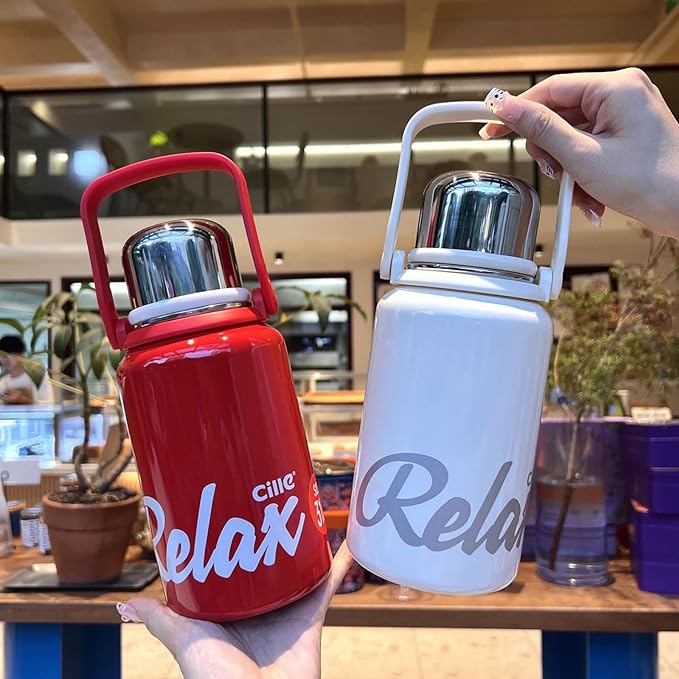The vacuum flask is highly practical during the cold season, primarily designed with a vacuum layer. It effectively delays the heat dissipation of the water inside, keeping it warm for an extended period. Besides the thermos cup’s design, the insulation time also depends on its material. So, what is the best material for thermal insulation cups? Thermos cups are crafted from various materials such as 304 stainless steel, 316 stainless steel, purple sand, ceramics, etc. Choose according to your needs. Which is better: the 304 liner or the 316 liner of the vacuum flask? How do you clean the thermos cup for the first time? How do you eliminate the odor from the thermos? Let’s explore the Encyclopedia of Thermos Cup Knowledge!
The Principle of the Vacuum Flask
Most common vacuum flasks on the market employ a vacuum double-layer design.
The Difference Between a Vacuum Cup and a Thermos Cup
A vacuum cup is a type of thermos cup made of stainless steel, offering good heat preservation and durability. While thermos cups also come in ceramic, glass, purple sand, and other materials, their thermal insulation is generally inferior to vacuum cups.
The Difference Between a Simmering Beaker and a Vacuum Flask
A simmering beaker is a convenient method for cooking food by pouring boiling water into a cup containing food, akin to a makeshift appliance. In contrast, a thermos cup is primarily for keeping warm liquids and not typically used for holding food.
Choosing the Best Material for Thermal Insulation Cups
Stainless steel thermal insulation cups are the most common, available in 304 and 316 stainless steel variants. While 316 stainless steel offers better resistance to corrosion and high temperatures, it’s also more expensive. For most, a food-grade 304 liner suffices. Ceramic thermos cups offer good insulation and enhance tea flavor. Purple sand insulation cups, made from natural clay, make excellent gifts. Glass mugs are easy to clean but prone to breakage. Plastic thermos cups have poor insulation and durability.
Precautions for Thermos Cup Purchases
Consider the cup’s size and design based on usage preferences and functionality needs. Customize cups if necessary.
Using the Thermos
Thermos cups can hold various beverages like tea, coffee, and soups but should be promptly cleaned after use to prevent stains.
Precautions for Vacuum Thermos Use
Avoid overfilling to prevent spills and scalds. Drink hot beverages slowly. After use, ensure the lid is tightly closed for hygiene.
Magical Uses of Insulated Water Bottles
Use the thermos for cooking porridge, boiling eggs, or as a portable refrigerator for cold drinks in summer.
Troubleshooting
Use a dry towel for better grip when opening tight lids. Replace the sealing ring if insulation is compromised. Leaking thermos cups may simply require water level adjustment.
Cleaning and Maintenance
Clean new thermos cups with neutral detergent before use. Remove tea scale with lemon or white vinegar. Eliminate odors with salt water, lemon, tea, or baking soda. Clean the lid by soaking the sealing ring in salt water and scrubbing with detergent.
Handmade Thermos Cup Cover Tutorial
Materials: Towel, twine, needle and thread, scissors, markers.
Steps:
- Wrap the towel around the thermos cup and mark the cutting point.
- Sew the cut towel into a cylinder shape and attach a circular bottom.
- Wrap a small cloth strip around the seam.
- Sew a hemp rope onto the cover.

